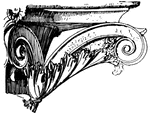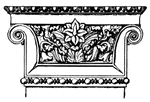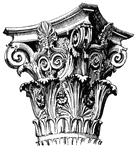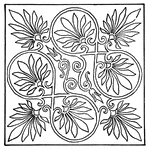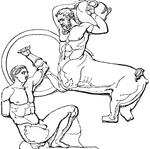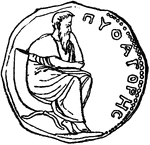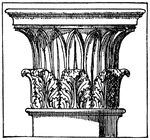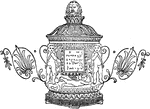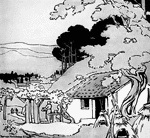Straight buccina
"A copy of an ancient sculpture taken from Blanchini's work, it still retains the original form of the…

Antique Corinthian Capital
The antique Corinthian capital is a found in Melos, Greece. It is a design of a two rows of leaves that…
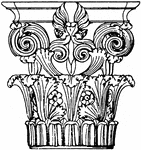
Greek Corinthian Capital
The Greek Corinthian capital is found in a monument in Lysikrates, Athens. It is a design of spiral…

Ionic Capital
The ionic capital is a design of a scroll rolled on both sides with spiral curves. It is found in Bassae,…
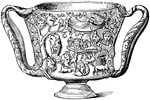
Carchesium
"The carchesium was a beaker, or drinking-cup, which was used by the Greeks in very early times. It…
Greek Caryatid
The Greek Caryatid is a female figure used as a support in place of a column. It is found in the temple…
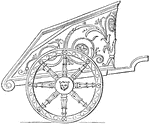
Chariot
"Arms and a chariot are here assigned to June through not properly a warlike goddess. The idea itself,…

Greek Chariot
"In the battles, as depicted by Homer, the chiefs are the only important combatants, while the people…
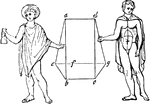
Chlamys
"The chlamys was a species of cloak or scarf, oblong instead of square, its length being generally about…
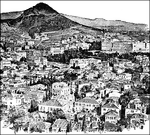
The City of Athens Circa 1912
The city of Athens, Greece as it looked circa 1912. The mountain in the background is Mount Lycabettus.…

Clisthenes in the Olympic Games
Clisthenes, also known as the Father of Athenian democracy, is depicted competing in a chariot race…
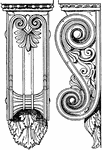
Greek Console
The Greek console is shown in the front and side view. It is found as a support to the North door of…
!["Afterwards [Solon] went to Sardis and made the acquaintance of Cresus. It was on this occasion that the celebrated interview occurred which has been so much repeated for its lesson. Cresus, desiring to make an impression on his visitor, took him into his treasury and showed him his riches."—Ridpath, 1885](https://etc.usf.edu/clipart/78900/78916/78916_treasures_mth.gif)
Cresus Showing Solon His Treasures
"Afterwards [Solon] went to Sardis and made the acquaintance of Cresus. It was on this occasion that…

Tombstone of a cultrarius
"The preceding cut represents the tombstone of a cultrarius, or the individual who slew the…

Banquet of Damocles
Image depicting a mythical moral anecdote, consisting of two morals. The first that regardless of who…

Demosthenes
"In the oratory of more thn two thousand years Demosthenes stands in the front rank, and will always…
!["Demosthenes had established himself as a public speaker before [the first Phillipic]; but it is chiefly in connection with Phillip that we are to view him as a statesman as well as an orator." — Smith, 1882](https://etc.usf.edu/clipart/16600/16602/demosthnbust_16602_mth.gif)
Bust of Demosthenes
"Demosthenes had established himself as a public speaker before [the first Phillipic]; but it is chiefly…

Sculpture of Demosthenes
Demosthenes was a prominent Greek statesman and orator of ancient Athens. His orations constitute a…
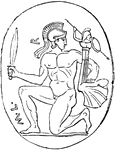
Diomede
"The following cut, from an ancient gem, represents Diomede in the act of bearing away the Palladium."…

The Discus Thrower
Also known as Discobolus. The Discus Thrower is a famous, ancient bronze statue that demonstrates a…
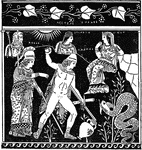
Cadmus and the Dragon
"Cadmus and the Dragon. (From a vase-painting at Naples.)" — The Delphian Society, 1913
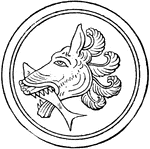
Episemon
Episema were used in Greece as a symbol for a country, region, or used on a shield or badge. This episemon…
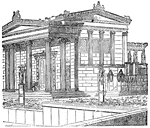
Erechtheum restored
"The building of the new Erechtheum was not commenced till the Parthenon and Propylea were finished,…

Euripides
"Euripides was born in the island of Salamis, in B.C. 480, his parents having been among those who fled…
Exedra at the Street of Tombs in Assos
An exedra is a semicircular recess set into a building's facade. The exedra at the Street of Tombs in…
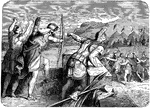
Astor to Philip's Right Eye
"It was during the siege of Methone that Philip had the misfortune to lose on of his eyes. A random…
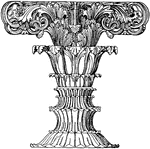
Finial Foliated Shaft
The finial foliated shaft is a Greek design of the choragic monument of Lysikrates in Athens.
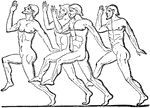
Foot-race
"The Olympic games were of greater efficacy than the Amphictyonic Council in promoting the spirit of…

Obverse and Reverse Sides of a Gazzetta
"Gazzetta of the Ionian islands, 1801. A small copper coin, worth about 3 farthings, made in Venice…

Gladiators
This illustration shows various types of gladiators, each type with with his specific weapons attributed…

An Athenian Gravestone
"A relief on the tomb of a certain Hegeso. It represents a woman, seated, taking a jewel from a casket…

Greaves and shield
"Represents the interior view of a bronze shield and a pair of greaves. These greaves are made right…
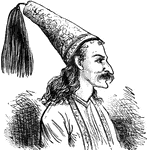
Greek
"The Greeks belong to the great Indo-European race, who from the earliest times have been the conquerers…
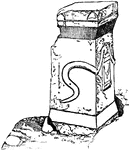
Greek Altar
"Round, triangular, or square in plan, often elaborately adorned with sculpture, and bearing inscriptions."-Whitney,…
